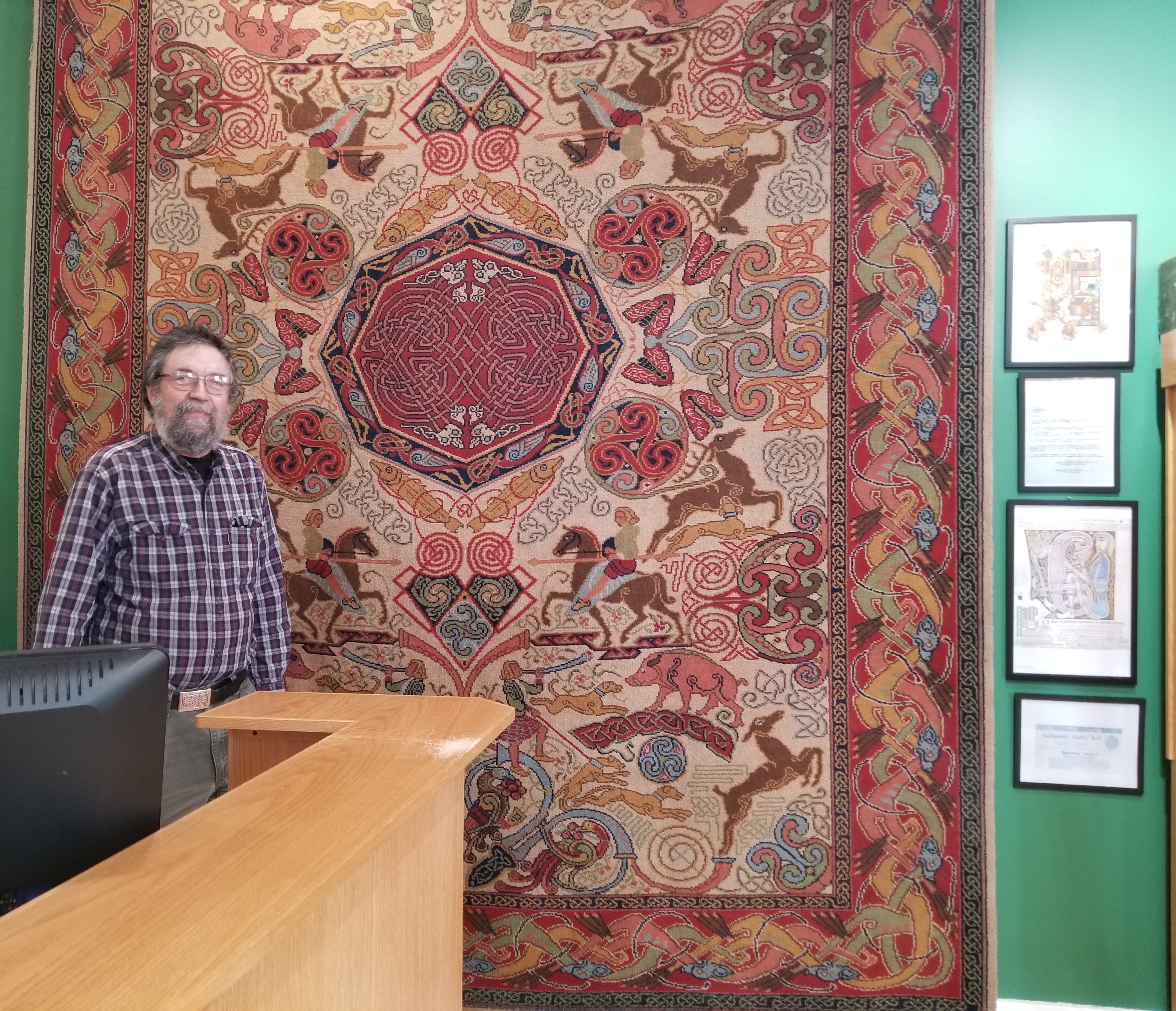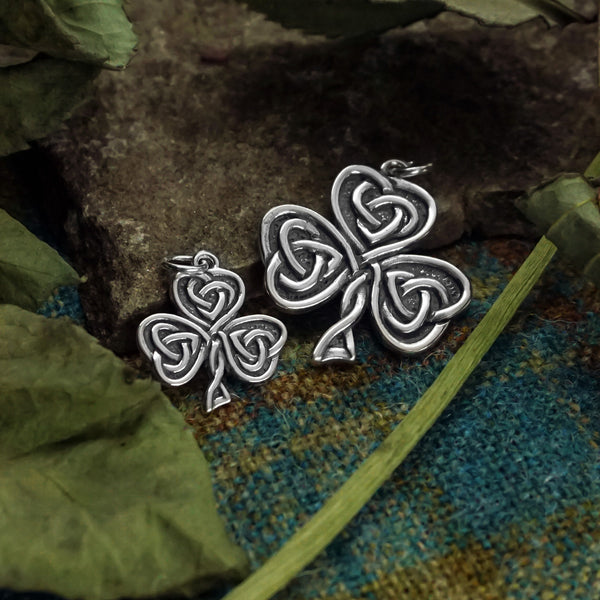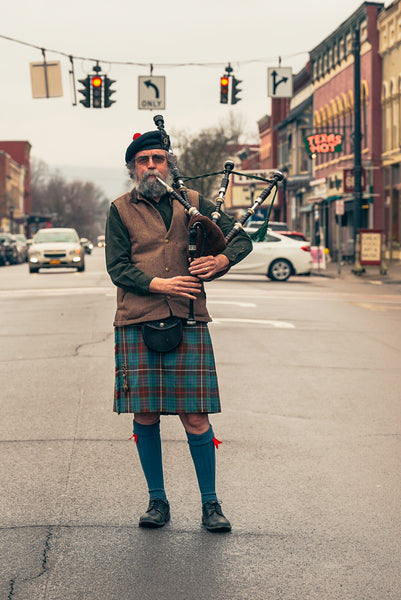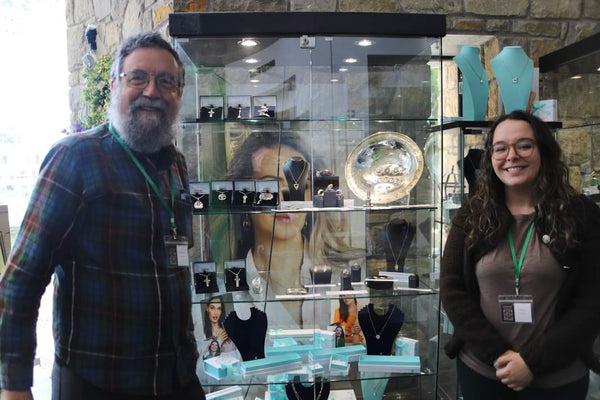- Jewelry
- Crosses
- Rings
- Mens
- Claddagh
- Wedding
- Personalized Jewelry
- John Urban Jewelry
- Sale
- Gift Certificates
- About Us
April 22, 2022 2 Comments

Visitors to Walker Metalsmiths’ showroom on Main Street in Andover, NY are often struck by the beautiful Celtic carpet displayed on the wall. On a recent trip to Scotland, I learned more about the history of this rare and exquisite treasure of Celtic art.
The Scottish art teacher George Bain (1881-1968) is often considered the father of the Celtic Renaissance. He several years after his retirement from teaching high school art in Kirkcaldy in 1946 saw the publication of his book, Celtic Art; The Methods of Construction and the launch of the production of several rug designs by the Kidderminster carpet firm of Quayle & Tranter.
Around twenty years ago I spotted our rug on an internet auction website. We displayed it on the wall in our Fairport, NY store for several years. When we opened our new showroom in Andover in 2018, the Hunting Carpet contributed to the vibe of the restored historical building.
Earlier in 2022 I was invited to join an advisory panel for the George Bain Collection that is under the stewardship of Groam House Museum in Rosemarkie, Easter Ross, Scotland. My relationship with Groam House goes back 25 years and I have visited several times. Since Sue and I were going to be in Scotland for part of our trip to participate in the Ninth International Insular Art Conference in Durham, England in April, I made arrangements to visit again and have a closer look at the collection.

Dr. Jo Clements, the George Bain Curator and project manager met with me and allowed me access to many of Bain’s letters and original drawings. I made several very interesting discoveries. Regarding the Hunting Carpet, I found the original contract between Bain and the manufacturing firm stating that he would be paid £ 150 per year for his designs starting in 1951. Correcting for inflation that would be around £5,500 today, or over US $7,000.
There was also correspondence the authenticity label. On our carpet the label is missing, so this is very interesting as it tells what George Bain message intended the design to convey and tells his ideas about the general messages and meanings Bain assumes for common motifs in Celtic art.
An interesting point about this very ambitious and complicated composition that I think are noteworthy. The human figures are dressed in the costume of two very different eras, both of which figure heavily into the idealized past. The kilted figures appear to be from the 17th or 18th century Jacobite period. This period of history was greatly romanticized by the novels of Sir. Walter Scott and more recently by the Outlander novels and video series. The older costume of the mounted figures is derivative of the carvings on the early medieval Pictish stones of the 7th to 10th centuries. Although Bain frequently referenced such foundational masterpieces as the Irish Books of Kells, Durrow and the Northumbrian Lidisfarne Gospels, his observations were based on illustrations from books. It was the elaborately carved Pictish sculpture of his native Northeast Scotland that he had the most direct contact with the actual original artwork.
March 01, 2024
Now, that’s a carpet page, if I ever saw one!
Comments will be approved before showing up.

March 12, 2024

February 23, 2024
Thousands of photographs were taken. Help find at least one.
Were you a tourist in London, Dublin or Paris in 1975 – 1978? Did you see a street performer playing bagpipes? Did you take his picture? Was it Steve Walker? If you can share that picture with Walker Metalsmiths you could score some sweet Celtic jewelry.

June 26, 2023
Sign up to get the latest on sales, new releases and more …

Monday-Friday 9-5
Saturday 10-3

Richard Walker
March 01, 2024
I love the designs you have put on your site. Awesomeness for sure.